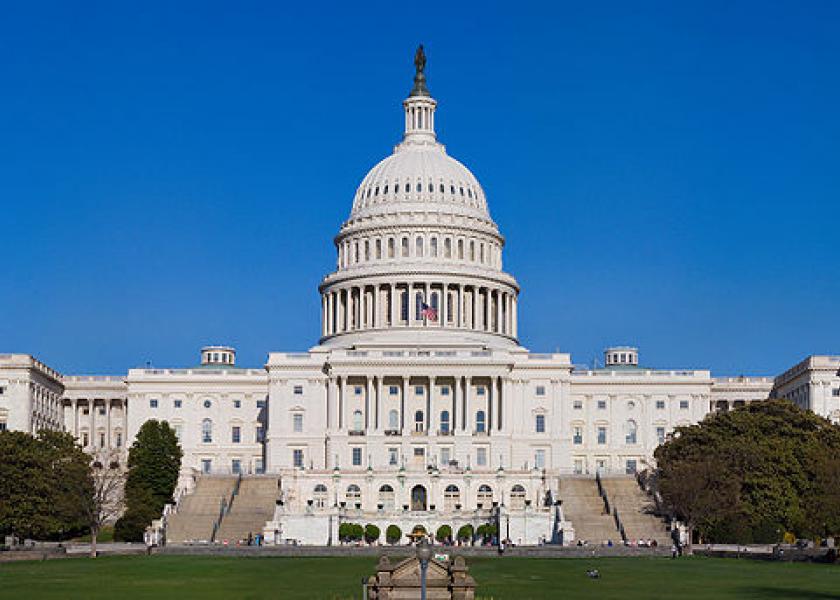NCBA Policy Team Reflects on 2021 Campaigns, Forecasts 2022

Earlier this week, the National Cattlemen’s Beef Association (NCBA) policy team convened to summarize their efforts on The Hill in 2021.
With 2020 as a backdrop, NCBA shifted their energy in 2021 to producer profitability throughout the supply chain.
COVID-19 and Retail
Ranchers and packers experienced many processing issues because of the pandemic. NCBA Vice President of Government Affairs Ethan Lane says the NCBA has spent numerous hours on The Hill advocating for accessible and fair market competition.
“We're continuing to reiterate to the administration that we need to diversify and regionalize packing capacity to create new capacity in areas that are underserved,” says Lane. “We have a tremendous amount of demand right now—both nationally and internationally—that we need to capitalize on.”
Lane says the NCBA’s 2022 agenda includes finding price discovery options to make sure producers are able to choose “the best marketing method for their cattle, rather than a government mandate telling them how to market their cattle.”
Earlier this year, the National Economic Council officials studied earnings statements from Tyson Foods, the chicken producer and biggest U.S. meat company by sales; Brazil-based JBS SA, the world's biggest meatpacker; Brazilian beef producer Marfrig Global Foods SA which owns most of National Beef Packing Company; and Seaboard Corp RIC.
Those statements showed a 120% collective jump in their gross profits since the pandemic and a 500% increase in net income, the analysis shows. These companies recently announced $1 billion in new dividends and stock buybacks, on top of the more than $3 billion they paid to shareholders since the pandemic began.
The USDA announced investments to expand processing capacity and increase competition in meat and poultry processing to make agricultural markets fair and competitive. NCBA anticipates these payments will be distributed to state and regional packers after the New Year.
Sustainability and Climate
Lane is “extremely pleased” by the difference in how grazing and cattle production is being treated in the policy conversation in Washington following the release of the industry’s sustainability goals that include a climate net neutrality by 2040.
“In previous administrations, we've always been thought of as a threat or an impact.” Says Lane. “We're now being embraced as a climate solution.”
The “America the Beautiful” climate initiative—the Biden administration’s version of what is commonly known as “30x30”, the goal of conserving 30 percent of the nation’s land and waters by 2030—has yet to be addressed.
The Biden administration has released a statement of principles which outlines their goals for 30 by 30, but doesn’t include plans to make changes through policy proposals. Lane is unsure whether the proposal will come to fruition, saying “the White House will never placate the environmental community with anything they do in this space.”
WOTUS
United States Environmental Protection Agency (EPA) and the U.S. Army Corps of Engineers published a rule in the Federal Register in early December, initiating updates to the definition of the waters of the United States (WOTUS) that reflect the pre-2015 regulatory definition.
The proposed rule comes following a June 2021 statement made the Biden administration, detailing plans to repeal the Trump administration’s Navigable Waters Protection Rule (NWPR) promulgated under WOTUS in 2020. New regulations defining federally protected waterways under the Clean Water Act were then announced in November by the EPA and the Army Corps of Engineers.
EPA Administrator Michael Regan says the proposed transition was created to bring clarity and consistency to WOTUS:
“Through our engagement with stakeholders across the country, we’ve heard overwhelming calls for a durable definition of WOTUS that protects the environment and that is grounded in the experience of those who steward our waters.”
Scott Anderson of the Texas Cattle Feeders Association says the NCBA’s work with the EPA in the past four years is under review and will be revised or altogether rescinded. However, the NCBA has launched a public relations campaign to demonstrate the WOTUS rule’s impact on agriculture.
“We’re really focused on making sure that whatever comes out of this process does not effectively duplicate the rule that we saw from the Obama administration, which is an over-expansive rule.”
For more on the NCBA’s 2022 policy priorities, click here.







